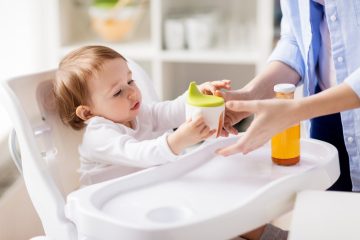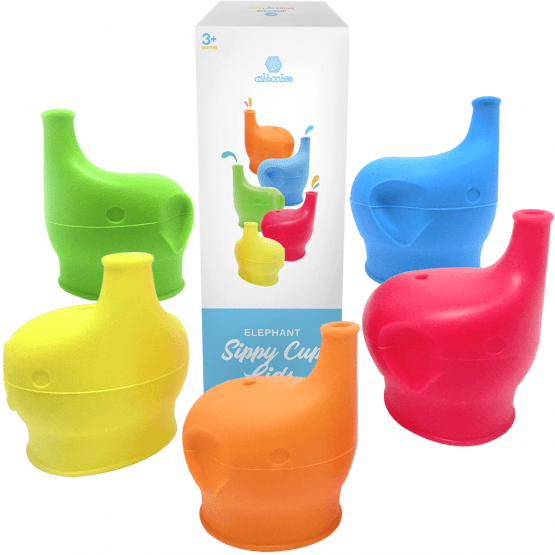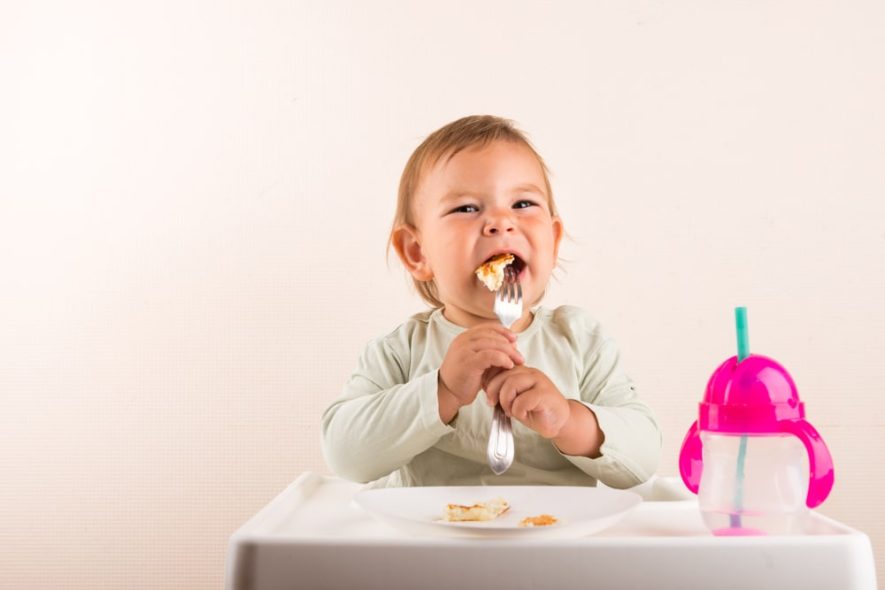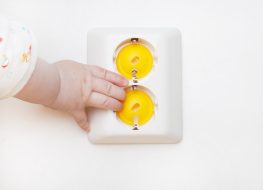
Transitioning from breastfeeding and feeding bottles to a proper cup can be challenging for little kids, and sippy cups help bridge that gap. Taking away your kid’s bottle should start at around 12 to 24 months, and as they learn to use cups, you can expect spills and messes to lessen.
There is a learning curve for using sippy cups, and patience is key when teaching your kids. In this article, we’ll help you choose the best sippy cup for your kids. We’ll also list each cup’s pros and cons to help you with your purchase.
Different Types of Sippy Cups
There are five primary types of sippy cups. With so many choices, it can be confusing to choose the right one. We’ll take a closer look at each sippy cup so you choose the one most suitable for your little kids.
Soft Spout Sippy Cup
Soft spout sippy cups are also called transitional sippy cups. These cups are used to train your kids on how to use a cup while retaining some of the characteristics of a feeding bottle. The soft spout has the same feel as a bottle nipple, but this cup has two handles for little kids to practice their grip.
Pros of Soft Spout Sippy Cups
- The spouts are soft, and drinking imitates sucking a bottle—making the transition easier for little kids.
- These transitional sippy cups can help encourage baby-led weaning.
- These sippy cups are suitable for kids as young as six months old.
Cons of Soft Spout Sippy Cups
- The soft spout is not suitable for teaching your kids how to sip properly.
Hard Spout Sippy Cups
A hard spout sippy cup is more suitable for toddlers. The hard spout eliminates sucking, which slowly takes away feeding bottles from your kid’s routine. Hard spout sippy cups have to be tilted to get the liquid out, teaching your baby grip and control.
Pros of Hard Spout Sippy Cups
- These sippy cups are a great way to encourage your kid’s independence.
- You can buy them with extras like spill-proof features and insulation so your toddlers can bring them to school and daycare.
Cons of Hard Spout Sippy Cups
- Not suitable for younger kids since titling the cup can overwhelm them with flowing liquids, which can lead to choking.
Straw Cups
Sippy cups with spouts are not suitable in the long run. The spouts can cause dental problems; doctors and therapists link them to speech problems. Straw cups are a better alternative to prevent this potential problem.
Pros of Straw Cups
- Kids don’t have to tilt these cups, encouraging your kids to learn to sip.
- Doctors and speech therapists recommend this type of cup.
Cons of Straw Cups
- The straw needs regular cleaning since it accumulates bacteria. It can be a hassle for on-the-go and daily sippy cups.
Flat-Lid Sippy Cups
These flat-lid sippy cups are a great way to train your kids to transition to regular cups. They are spoutless, and they have a lid that your kids can bite into for liquid to flow out of the cup.
Pros of Flat-Lid Cups
- The lid design makes it spill-proof and convenient for parents and little kids.
- Dentists recommend these cups because they promote good dental health, and biting into the lid helps your kids develop their mouth and jaw muscles.
- The cup is easy to maintain and clean.
Cons of Flat Lid Cups
- It takes some time for kids to learn how to use it, especially when they are accustomed to spouts and straws.
Open Top Cups
When your kids are ready to graduate from the baby sippy cup, open cups are the answer as they are almost identical to adult cups. These are smaller and lighter versions of a regular cup, and are usually made with food-grade soft silicone so they are easier to hold.
You can use these as training cups to help your baby practice holding on to a real cup without spilling its contents.
Pros of Open Top Cups
- This big kid cup gives your kids confidence and develops their fine motor skills.
- They are easy to clean, and most designs are dishwasher-safe, which is convenient for parents.
Cons of Open Top Cups
- It takes a lot of patience and training to master this cup.
- They are wider than other sippy cups and have no handle, making them harder to hold, especially for little kids.
Important Factors To Consider When Choosing the Best Sippy Cups for Your Baby
You want to get your money’s worth when buying baby gear. To help you choose the best sippy cup for your kids, take note of these considerations.
Choose Non-Toxic Materials
The first and most crucial thing to look for is a non-toxic sippy cup. Here are some safe materials you can choose from.
- Plastic Sippy Cups: Plastic is the cheapest, but you must also be careful when choosing this material. Always check if the plastic is PVC-, phthalates-, lead-, and BPA-free.
- Silicone Sippy Cups: From baby bottles to toddler cups, silicone is the best choice. It’s lightweight, soft, and non-toxic. Be cautious of some silicone cup models that stain easily and come with a strong smell.
- Glass Cups: If you want no harmful chemicals in your kid’s sippy cups, glass is a good choice. However, this material is heavy and prone to breaking.
- Stainless Steel Sippy Cups: A stainless steel cup is a good choice if you prefer something other than plastic. These cups are durable, and some are insulated to keep the liquids inside at the right temperature.
Leak-Proof Cups
Don’t expect your kids to master drinking from sippy cups immediately, and expect a lot of spills. In some cases, your kids may throw their cups during a tantrum or when being playful. Great sippy cups have leak-proof features. Leak-proof features are convenient for both babies and parents.
Easy Grip Handles
Little kids are only learning to grip things, so their sippy cups should have handles. It will help them control their cups better and develop their ability to grip. You can consider removable handles as well. When you observe your kids holding their cups properly, you can remove them and begin their transition to open cups.

Ashtonbee’s Sippy Cup Lids
If you still can’t choose a sippy cup for your kids, check out Ashtonbee’s sippy cup lids that can turn any cup into a sippy cup your kids can use. Check out some of its features.
- The sippy cup lids are made from food-grade silicone and are lead-, PVC-, phthalates-, and BPA-free.
- It turns any cup between 2.5 to 3.75 inches in diameter into spill-proof sippy cups.
- The lid has a soft silicone spout which makes it easier for your kids to use.
- The product is easy to clean and maintain. You can wash it with soap and water, and it is dishwasher-safe.
- These sippy cup lids are perfect for traveling with your babies.
- Each pack comes with five vibrant-colored sippy cup lids for an affordable price of $13.99.
When choosing your kid’s gear, being meticulous about its materials, construction, and other features are a must for parents. We hope this article helps you choose the best sippy cup for your baby.
In addition, if you’re looking for more baby feeding gear, Ashtonbee offers high-quality baby bibs, bowls, spoons, feeders, and teethers. Browse our collection and shop with us today.




